- Photo Safaris
- Alaska Bears & Puffins World's best Alaskan Coastal Brown Bear photo experience. Small group size, idyllic location, deluxe lodging, and Puffins!
- Participant Guestbook & Testimonials Candid Feedback from our participants over the years from our photo safaris, tours and workshops. We don't think there is any better way to evaluate a possible trip or workshop than to find out what others thought.
- Custom Photo Tours, Safaris and Personal Instruction Over the years we've found that many of our clients & friends want to participate in one of our trips but the dates we've scheduled just don't work for them or they'd like a customized trip for their family or friends.
- Myanmar (Burma) Photo Tour Myanmar (Burma) Photo Tour December 2017 -- with Angkor Wat option
- Reviews Go hands-on
- Camera Reviews Hands-on with our favorite cameras
- Lens reviews Lenses tested
- Photo Accessories Reviews Reviews of useful Photo and Camera Accessories of interest to our readers
- Useful Tools & Gadgets Handy tools and gadgets we've found useful or essential in our work and want to share with you.
- What's In My Camera Bag The gear David Cardinal shoots with in the field and recommends, including bags and tools, and why
- Articles About photography
- Getting Started Some photography basics
- Travel photography lesson 1: Learning your camera Top skills you should learn before heading off on a trip
- Choosing a Colorspace Picking the right colorspace is essential for a proper workflow. We walk you through your options.
- Understanding Dynamic Range Understanding Dynamic Range
- Landscape Photography Tips from Yosemite Landscape Photography, It's All About Contrast
- Introduction to Shooting Raw Introduction to Raw Files and Raw Conversion by Dave Ryan
- Using Curves by Mike Russell Using Curves
- Copyright Registration Made Easy Copyright Registration Made Easy
- Guide to Image Resizing A Photographers' Guide to Image Resizing
- CCD Cleaning by Moose Peterson CCD Cleaning by Moose Peterson
- Profiling Your Printer Profiling Your Printer
- White Balance by Moose Peterson White Balance -- Are You RGB Savvy by Moose Peterson
- Photo Tips and Techniques Quick tips and pro tricks and techniques to rapidly improve your photography
- News Photo industry and related news and reviews from around the Internet, including from dpreview and CNET
- Getting Started Some photography basics
- Resources On the web
- My Camera Bag--What I Shoot With and Why The photo gear, travel equipment, clothing, bags and accessories that I shoot with and use and why.
- Datacolor Experts Blog Color gurus, including our own David Cardinal
- Amazon Affiliate Purchases made through this link help support our site and cost you absolutely nothing. Give it a try!
- Forums User to user
- Think Tank Photo Bags Intelligently designed photo bags that I love & rely on!
- Rent Lenses & Cameras Borrowlenses does a great job of providing timely services at a great price.
- Travel Insurance With the high cost of trips and possibility of medical issues abroad trip insurance is a must for peace of mind for overseas trips in particular.
- Moose Peterson's Site There isn't much that Moose doesn't know about nature and wildlife photography. You can't learn from anyone better.
- Journeys Unforgettable Africa Journeys Unforgettable -- Awesome African safari organizers. Let them know we sent you!
- Agoda International discounted hotel booking through Agoda
- Cardinal Photo Products on Zazzle A fun selection of great gift products made from a few of our favorite images.
- David Tobie's Gallery Innovative & creative art from the guy who knows more about color than nearly anyone else
- Galleries Our favorite images
What size camera is right for you?
What size camera is right for you?
Submitted by David Cardinal on Thu, 02/26/2015 - 10:59
 It is a truism in photography that the best camera is the one you have with you. In that spirit, whenever I’m asked for advice on what new camera someone should buy, I try to figure out not just their budget and needs, but how much camera they’re really likely to be willing to carry around. For many, it isn’t obvious what they gain by “trading-up” to a larger, heavier, and more-expensive model. While it is always dangerous to generalize, there are certain rules of thumb about the pros and cons of various types of current-model digital cameras. We’ll help you sort through your options…
It is a truism in photography that the best camera is the one you have with you. In that spirit, whenever I’m asked for advice on what new camera someone should buy, I try to figure out not just their budget and needs, but how much camera they’re really likely to be willing to carry around. For many, it isn’t obvious what they gain by “trading-up” to a larger, heavier, and more-expensive model. While it is always dangerous to generalize, there are certain rules of thumb about the pros and cons of various types of current-model digital cameras. We’ll help you sort through your options…
Zero footprint: Your smartphone
Nearly everyone now carries some type of smartphone. If it is a current model, the camera in it probably offers plenty of resolution, and produces reasonable quality JPEG images, suitable for sharing on the web and for small prints. The tiny sensors in smartphones really struggle in low light, though, and they aren’t very useful for photographing action. Some units feature image stabilization, which is nice as they are hard to hold steady, but almost none of them offer any type of zoom capability. Presumably you already have a pretty good sense of the images you can capture with your phone, and if you’re reading this you’re thinking about getting something better, so let’s look at your options.
Tiny: About the same as a set of car keys
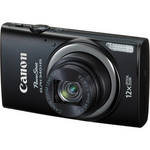 Point and shoot camera sales continue to plummet, as they are replaced in large part by smartphones, but there are still new-and-improved models being introduced on a regular basis. For the price of a couple hundred dollars and a few extra ounces, you’ll get a larger sensor (for better low-light images), a real zoom, and easier to use controls. My favorite cameras in this category are the Canon Elph models. Right now, B&H has the current model Elph 340 HS on sale for $149 – a 16MP, 12x zoom model that does 1080p video, and features image stabilization. At 5 ounces it weighs about as much as your phone, but packs a lot more imaging power.
Point and shoot camera sales continue to plummet, as they are replaced in large part by smartphones, but there are still new-and-improved models being introduced on a regular basis. For the price of a couple hundred dollars and a few extra ounces, you’ll get a larger sensor (for better low-light images), a real zoom, and easier to use controls. My favorite cameras in this category are the Canon Elph models. Right now, B&H has the current model Elph 340 HS on sale for $149 – a 16MP, 12x zoom model that does 1080p video, and features image stabilization. At 5 ounces it weighs about as much as your phone, but packs a lot more imaging power.
Pocket-sized: My go-to, carry everywhere favorite
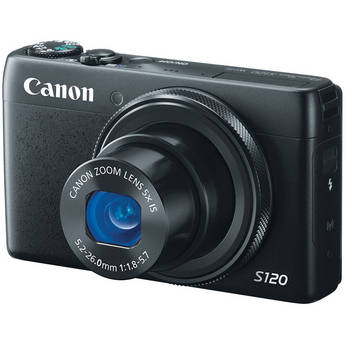 As anyone who travels with me knows, my trusty Canon PowerShot S100 never leaves my side. It fits easily in the side pocket of my safari pants, and has an integrated lens cap so I never have to worry about it. (Although I’m forever dinging the lens cover on the sides of trucks, it is easy to bend back into shape). The key to this camera’s utility is its relatively low resolution (meaning it has larger pixels than many competitors, and therefore produces superior images in touch conditions), and relatively small (5x) zoom range – allowing it to have a faster, higher-quality lens than most of its competitors.
As anyone who travels with me knows, my trusty Canon PowerShot S100 never leaves my side. It fits easily in the side pocket of my safari pants, and has an integrated lens cap so I never have to worry about it. (Although I’m forever dinging the lens cover on the sides of trucks, it is easy to bend back into shape). The key to this camera’s utility is its relatively low resolution (meaning it has larger pixels than many competitors, and therefore produces superior images in touch conditions), and relatively small (5x) zoom range – allowing it to have a faster, higher-quality lens than most of its competitors.
The S100 model has been replaced, so it is hard to find, but the updated version, the 12MP, 5x zoom Canon PowerShot S120, has added WiFi and improved the image quality slightly. Either unit is just under 8 ounces, so about 50% larger and heavier than the Elph line. In exchange, you get a larger sensor, more manual controls, Raw (and Raw+JPEG) format recording, higher ISO capability, and (IMO) easier-to-use controls.
Cargo Pocket-sized: Trading up at the cost of baggy trousers
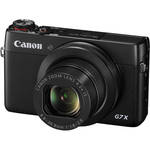 I’ve several of the higher-end point and shoots, including the Sony RX100 and the Lumix LX100, and have enjoyed shooting with them. They offer a significant upgrade in sensor size, and image quality, over the smaller point-and-shoots, but at a large increase in both camera size and cost. I’m most excited about the one I’m currently reviewing, the Canon G7 X. It is really not that much larger and heavier than the Canon PowerShot S120, but offers a major step up to a 1-inch sensor, faster Autofocus, an improved and faster lens, and additional modes and manual controls. It is not inexpensive, at $700 at B&H, but it is the first of these “super compacts” that still fits (although barely) in the side pocket of my trousers, or in my jacket pocket. I’ll have more to say when I publish my full review – after I spend more time shooting with it – but right now I’m thinking this might become my new “everyday” camera.
I’ve several of the higher-end point and shoots, including the Sony RX100 and the Lumix LX100, and have enjoyed shooting with them. They offer a significant upgrade in sensor size, and image quality, over the smaller point-and-shoots, but at a large increase in both camera size and cost. I’m most excited about the one I’m currently reviewing, the Canon G7 X. It is really not that much larger and heavier than the Canon PowerShot S120, but offers a major step up to a 1-inch sensor, faster Autofocus, an improved and faster lens, and additional modes and manual controls. It is not inexpensive, at $700 at B&H, but it is the first of these “super compacts” that still fits (although barely) in the side pocket of my trousers, or in my jacket pocket. I’ll have more to say when I publish my full review – after I spend more time shooting with it – but right now I’m thinking this might become my new “everyday” camera.
Beltpack-sized: Mirrorless are mini-DSLRs
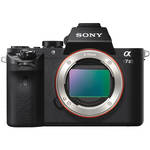 With the advent of hybrid (phase + contrast) Autofocus, and nearly-lifelike Electronic Viewfinders, mirrorless cameras are more or less poised to crush at least the low-end of the DSLR market. Their mirror-free design makes them smaller, quieter, and less prone to mechanical failures. The category has been held back mostly because Nikon and Canon refuse to take it seriously and have completely failed to produce compelling mirrorless cameras. But if you’re not anchored to either one of them, Sony in particular has really pushed the mirrorless performance envelope. The latest, no-compromise, model is the Sony A7 II, a full-frame mirrorless with an EVF that was so good that I could hardly tell it wasn’t a through-the-lens view. (Read my field test)
With the advent of hybrid (phase + contrast) Autofocus, and nearly-lifelike Electronic Viewfinders, mirrorless cameras are more or less poised to crush at least the low-end of the DSLR market. Their mirror-free design makes them smaller, quieter, and less prone to mechanical failures. The category has been held back mostly because Nikon and Canon refuse to take it seriously and have completely failed to produce compelling mirrorless cameras. But if you’re not anchored to either one of them, Sony in particular has really pushed the mirrorless performance envelope. The latest, no-compromise, model is the Sony A7 II, a full-frame mirrorless with an EVF that was so good that I could hardly tell it wasn’t a through-the-lens view. (Read my field test)
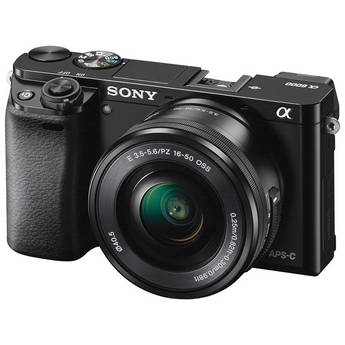 Even though the Sony A7 II is mirrorless, because it is full-frame it is far from the smallest of the mirrorless models, at 1.22 pounds. If you’re willing to live with an APS-C sensor, then the Sony a6000 is a great, and lower-cost, alternative. At $700 including lens, the Sony a6000 represents one of the best overall price-performance values in current camera models. If you’re willing to carry a camera that won’t fit in a pocket, but will fit in a small waist pack or shoulder bag, this is one well worth considering. Including the kit lens, it weighs in at just about 1 pound.
Even though the Sony A7 II is mirrorless, because it is full-frame it is far from the smallest of the mirrorless models, at 1.22 pounds. If you’re willing to live with an APS-C sensor, then the Sony a6000 is a great, and lower-cost, alternative. At $700 including lens, the Sony a6000 represents one of the best overall price-performance values in current camera models. If you’re willing to carry a camera that won’t fit in a pocket, but will fit in a small waist pack or shoulder bag, this is one well worth considering. Including the kit lens, it weighs in at just about 1 pound.
Shoulder bag-sized: “Standard”-size DSLRs on the rise
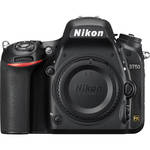 For the first few years they were on the market, the only DSLRs that produced high-quality images were the huge, 2+ pound models that were the size of a traditional film SLR + vertical grip. I’ve owned plenty of these monsters, and still use them when I need to, but increasingly the slightly smaller, more budget-friendly, models have replaced them in the bags of many pro and advanced amateur photographers. In particular the new Nikon D750 represents an amazing combination of performance and price, with a pro-worthy set of specs. (Read our full field-test & comparison with the Nikon D810). At just over 1.5 pounds and $2300 for the body only, this is a major step-up in size, weight, and cost from a mirrorless like the Sony a6000, but it is an amazingly versatile and rugged camera.
For the first few years they were on the market, the only DSLRs that produced high-quality images were the huge, 2+ pound models that were the size of a traditional film SLR + vertical grip. I’ve owned plenty of these monsters, and still use them when I need to, but increasingly the slightly smaller, more budget-friendly, models have replaced them in the bags of many pro and advanced amateur photographers. In particular the new Nikon D750 represents an amazing combination of performance and price, with a pro-worthy set of specs. (Read our full field-test & comparison with the Nikon D810). At just over 1.5 pounds and $2300 for the body only, this is a major step-up in size, weight, and cost from a mirrorless like the Sony a6000, but it is an amazingly versatile and rugged camera.
For Canon shooters, the Canon 7D II does a good job of going head to head with Nikon in the APS-C (Nikon DX) crop sensor space, while the Canon 6D holds its own for those wanting a full-frame version without the bulk of the 1D models. For lighterweight options, the Nikon D5300 and Canon Rebel series cameras bridge the gap between their larger siblings and the smaller mirrorless models.
Backpack-sized: Full-on Pro DSLRs are a dying breed
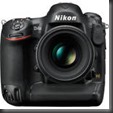 Last, but definitely not least, are the flagship models for Nikon and Canon. These beasts are actually getting larger, heavier, and more expensive over time. The newest models are nearly 3 pounds for the body only, with prices in the $6,000 and up range. Nikon’s flagship, the Nikon D4S, is remarkable not for high-resolution (it is “only” 16MP) but for its nearly unbelievable low-light (high-ISO) performance. (Read our full field-test review). Canon’s flagship model, the Canon 1D X, packs just about every feature a shooter could want into its bulky frame. This level of camera gives you blazing fast Autofocus, and massive frame rates of 10fps and up – while still focusing. Their no-compromise performance and build quality mean they can take a beating while still handling just about any photo assignment.
Last, but definitely not least, are the flagship models for Nikon and Canon. These beasts are actually getting larger, heavier, and more expensive over time. The newest models are nearly 3 pounds for the body only, with prices in the $6,000 and up range. Nikon’s flagship, the Nikon D4S, is remarkable not for high-resolution (it is “only” 16MP) but for its nearly unbelievable low-light (high-ISO) performance. (Read our full field-test review). Canon’s flagship model, the Canon 1D X, packs just about every feature a shooter could want into its bulky frame. This level of camera gives you blazing fast Autofocus, and massive frame rates of 10fps and up – while still focusing. Their no-compromise performance and build quality mean they can take a beating while still handling just about any photo assignment.

